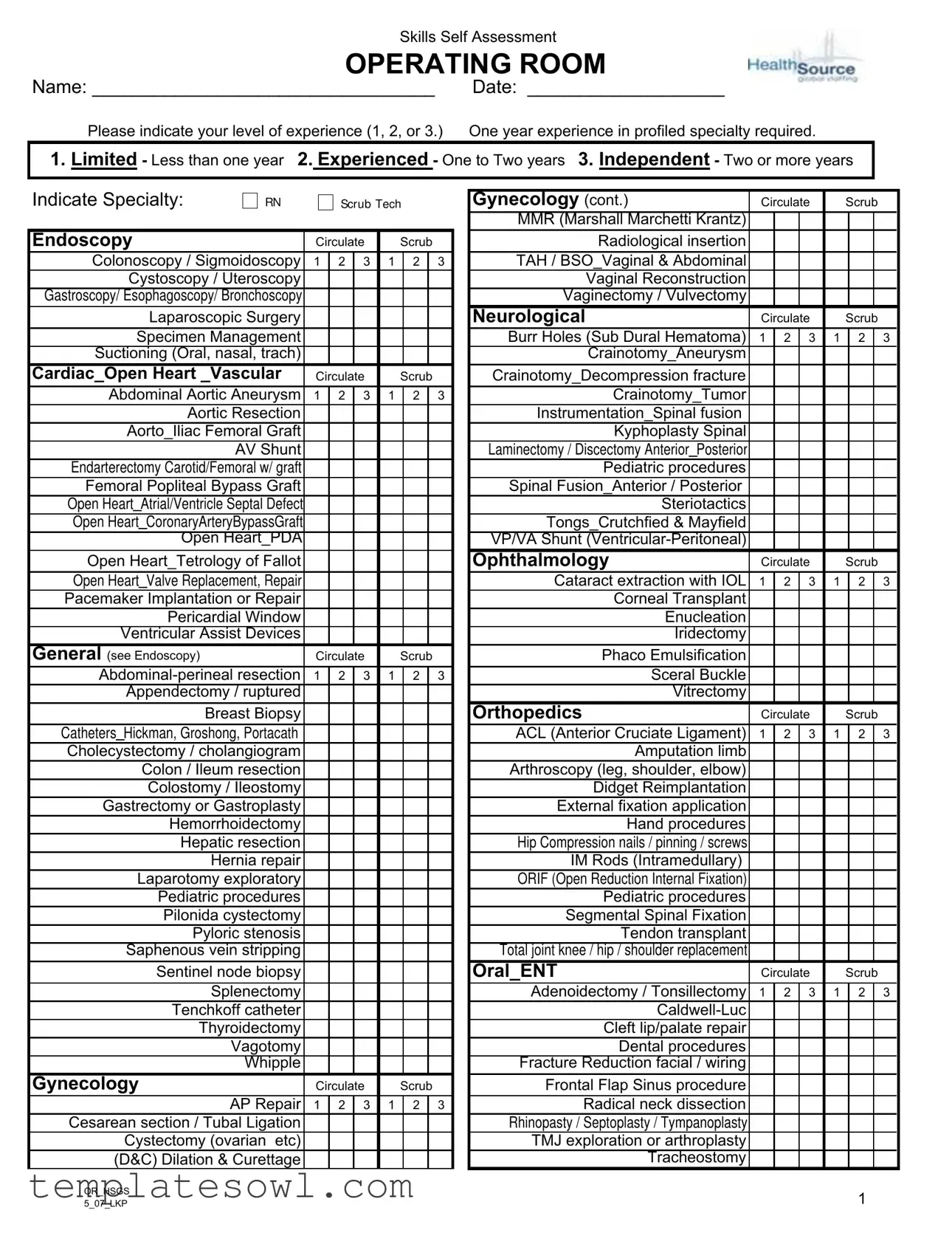When completing the Operating Room Competency Checklist form, many individuals make common mistakes that can lead to inaccuracies in their self-assessment. One significant error is failing to provide their name and date. Without this basic information, the form lacks the essential identifiers needed for tracking competency over time.
Another frequent mistake is misinterpreting the experience levels. The form categorizes skills into three levels: Limited, Experienced, and Independent. Some individuals either overestimate their experience or choose a lower rating out of modesty. This discrepancy can affect future assignments and professional development opportunities.
People often overlook the specialty section which requires specific indications for either RN or Scrub Tech roles. Failing to check the appropriate boxes means that the assessment cannot accurately reflect specialized skills in the Operating Room. This could result in the misallocation of responsibilities that do not match a person's actual capabilities.
Many individuals mistakenly skip certain procedures or skills listed on the form. For instance, if a person has experience in laparoscopic surgery but does not indicate it, they may miss showcasing their relevant expertise. Each unchecked skill could be a missed opportunity for recognition of their experience.
Moreover, some may fill out the form too quickly without taking the time to reflect on their experiences. Rushing through the checklist can lead to omissions or errors. A careful assessment of one's skills is crucial for an accurate representation of capabilities.
In some cases, individuals fail to sign and date the form at the bottom. Without a signature, the form may be considered incomplete or invalid. This action not only validates the information presented but also confirms accountability.
People sometimes neglect to include updates on certifications in the designated section. This omission can misrepresent an individual’s qualifications, as many roles in the Operating Room require current certifications. Keeping these details up to date is vital for maintaining compliance with hospital standards.
Lastly, many individuals do not seek assistance or clarification when needed. If there are uncertainties about how to assess oneself accurately, reaching out for guidance from supervisors or colleagues can help prevent misinterpretation of one’s skills. Collaboration fosters a more accurate and comprehensive assessment, benefiting everyone involved.


